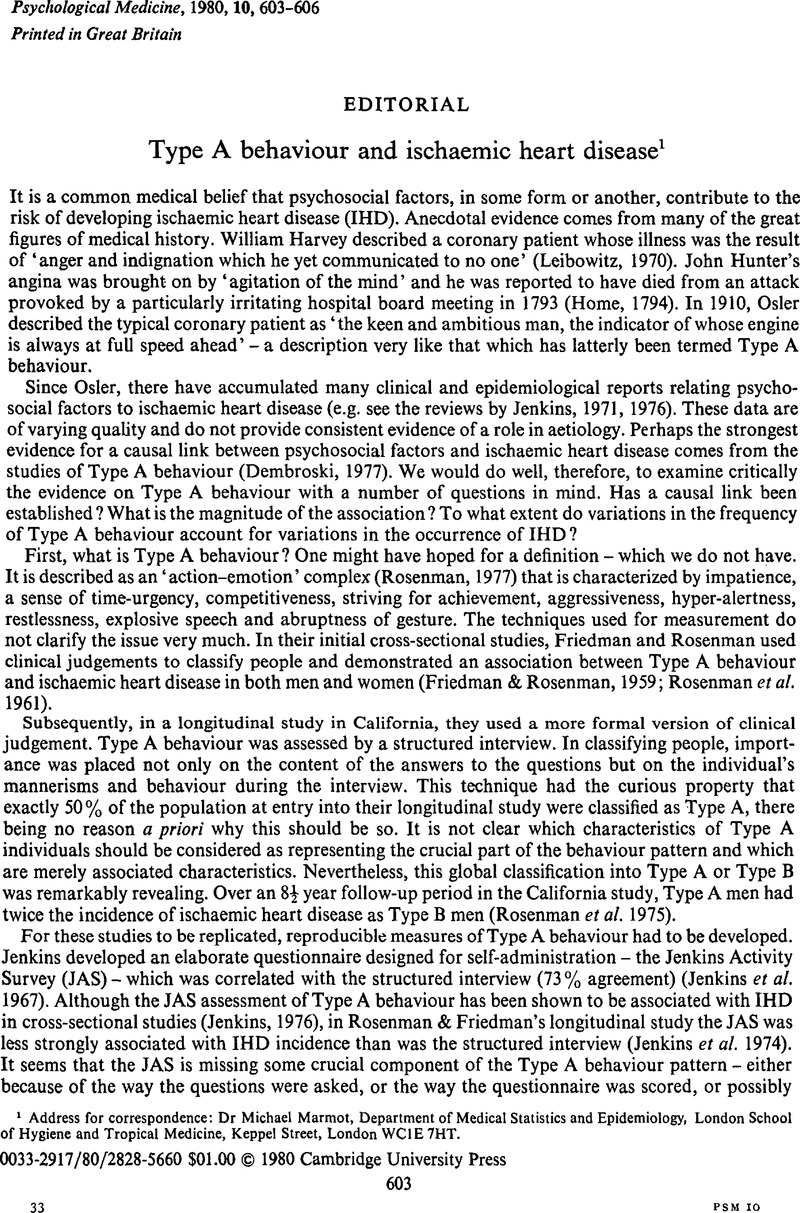Crossref Citations
This article has been cited by the following publications. This list is generated based on data provided by Crossref.
Rutter, Michael
1981.
STRESS, COPING AND DEVELOPMENT: SOME ISSUES AND SOME QUESTIONS*.
Journal of Child Psychology and Psychiatry,
Vol. 22,
Issue. 4,
p.
323.
Crisp, A. H.
Queenan, M.
and
D’Souza, M. F.
1983.
Psychosomatic Medicine.
p.
93.
Crisp, A.H.
Queenan, M.
and
D'Souza, M.F.
1984.
MYOCARDIAL INFARCTION AND THE EMOTIONAL CLIMATE.
The Lancet,
Vol. 323,
Issue. 8377,
p.
616.
Mayou, Richard
1985.
Current Themes in Psychiatry.
p.
189.
Mann, Anthony H.
1986.
The psychological aspects of essential hypertension.
Journal of Psychosomatic Research,
Vol. 30,
Issue. 5,
p.
527.
Mann, A.H.
and
Brennan, P.J.
1987.
Type A behaviour score and the incidence of cardiovascular disease: A failure to replicate the claimed associations.
Journal of Psychosomatic Research,
Vol. 31,
Issue. 6,
p.
685.
Condon, John T.
1987.
Type a Coronary-Prone Behaviour Pattern and Pathological Narcissism.
Australian & New Zealand Journal of Psychiatry,
Vol. 21,
Issue. 1,
p.
16.





